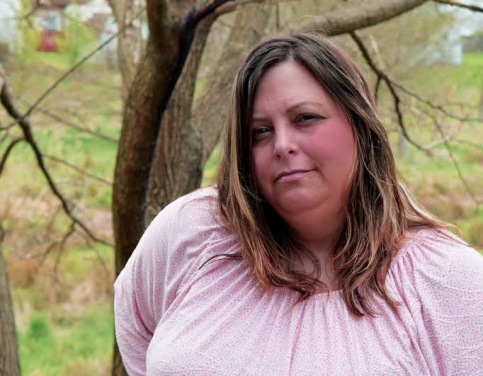As I approached Jessica’s home, I was excited for our interview, but also for the breakfast she was preparing for us. I’m used to grabbing something quick in the morning, so this was a treat: Greek omelet (no olives, thank you very much), French toast with maple syrup and bacon. Oh, and the perfect cup of coffee.
When she opened the door to invite me in, the first thing that came to my mind was this: Jessica does not look like someone who struggles with mental illness.
Later, I would regret what I thought was a harmless and even positive observation.
Here is her story.
A good day is a day without nightmares and flashbacks. On a good day she’s not consumed by guilt or by feelings of worthlessness and failure. On a good day she doesn’t have suicidal thoughts or urges to harm herself. On days like these, she can enjoy time with her family and friends.
“On the worst days, I feel nothing or I’m bombarded by the voices in my head accusing me of failing as a wife and mother,” Jessica said. “I want to die and I can’t even find the energy to make that happen.”

Jessica, outside her home. (Photo taken by her daughter, Lauren)
Meet Jessica: a wife and mother of two teenagers, who resides in Harford County, Maryland.
After enduring seven years of both inpatient and outpatient treatment from multiple sources, and a string of diagnoses, a psychiatrist finally recognized symptoms indicating that she has dissociative identity disorder (DID).
According to the National Alliance on Mental Illness, DID typically develops as a response to a traumatic event, such as abuse or military combat, to keep those memories under control.
In addition to DID, Jessica also has bipolar disorder, post-traumatic stress disorder and generalized anxiety disorder.
As if living with a mental illness isn’t difficult enough, the media constantly reinforces false and unhelpful stereotypes. This makes it difficult for people in society to see the mentally ill as individuals first. It reduces them to a single story.
According to Jessica, it’s common to be labeled as lazy, selfish and weak, although the exact opposite is true.
“If you’ve never suffered a clinical depression or related disorder, you have no idea the amount of energy it steals or how much more energy a simple task requires,” Jessica said. “There are days that brushing your teeth is your biggest accomplishment and there are days you can’t even do that.”
Another misconception is that those with mental illness are crazy and dangerous.
“There are far more suicides among the mentally ill than murders or other violent crimes,” Jessica said. “The reality just doesn’t make for good headlines and doesn’t sell many movie tickets.”
But stereotypes do sell and they sell big.
M. Night Shyamalan‘s recent film, Split, grossed over $40 million in just three days, quickly surpassing its $9 million budget. Although it entertained audience members, over half of whom were under 25-years-old, its unrealistic depiction of DID reinforces the negative stigma that these individuals are crazy, sadistic serial killers.
“It’s hard to get people past the stigma presented in the media because it’s easier to just believe what you see,” Jessica said. “And TV shows and movies always portray a negative view that only reinforces stereotypes.”
Stereotyping is the gateway to otherizing.
And Jessica is no stranger to being otherized by the medical community and sometimes even by well-meaning friends and family.
“Once a mental illness diagnosis is made, it colors everything about you, even if it has nothing to do with mental health,” Jessica said. “You become a psych patient and psych patients aren’t generally treated well.”
Among friends and family, she often perceives what she calls the “snap out of it” mentality. It’s not uncommon to hear statements like, “Why can’t you just get it together and do what you need to do for your kids?”
“Wow, I wish I thought of that,” Jessica said. “If only it were so easy.”
Then there are comments made like the very one I thought on the morning she opened her door and invited me into her home for breakfast.
“On more than one occasion I’ve been told that I don’t look like I have a mental illness,” Jessica said. “I’ve seen a lot of mentally ill people and except in a few extreme cases, I wouldn’t be able to point any of them out on the street.”
Although Jessica may wonder exactly what a mentally ill person looks like, I clearly had a picture in my mind. The picture was formed by a stereotype and in that moment, I did the very thing that I didn’t want to do.
I otherized Jessica.
To jump to part 2 of Jessica’s story, click here.